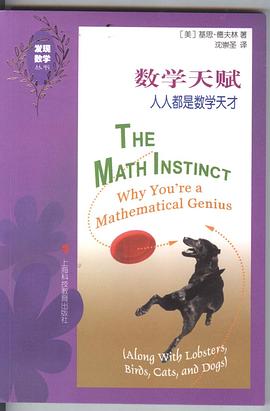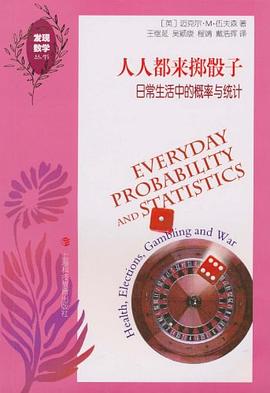齣版說明序SET THEORY: Using Mathematics to Classify Objects1.1 Problem Solving1.2 Estimafion1.3 The Language of Sets1.4 Comparing Sets1.5 Set Operafions1.6 Survey Problems Chapter Summary Chapter Test Of FurtherInterest: Infinite SetsLOGIC: The Study of What's True or False or Somewhere in Between2.1 Inductive and Deductive Reasoning2.2 Statements, Connectives, and Quantifiers2.3 Thumb Tables2.4 The Conditional and Biconditional2.5 Veilfying Arguments2.6 Using Euler Diagrams to Verify Syllogisms Chapter Summary Chapter Test Of Further Interest: Fuzzy LogicGRAPH THEORY: The Mathematics of Relationships3.1 Graphs, Puzzles, and Map Coloring3.2 The Traveling Salesperson Problem3.3 Directed Graphs Chapter Summary Chapter Test Of Further Interest: Scheduling Projects Using PERTNUMERATION SYSTEMS: Does It Matter How We Name Numbers?4.1 The Evolution of Numeration Systems4.2 Place Volume Systems4.3 Calculating in Other Bases Chapter Summary Chapter Test Of Further Interest: Modular SystemsNUMBER THEORY AND THE REAL NUMBER SYSTEM: Understanding the Numbers All Around Us5.1 Number Theory5.2 The Integers5.3 The Rational Numbers5.4 The Real Number System5.5 Exponents and Scientific Notation Chapter Summary Chapter Test Of Further Interest: SequencesALGEBRAIC MODELS: How Do We Approximate Reality?6.1 Linear Equations6.2 Modeling with Linear Equations6.3 Modeling with Quadratic Equations6.4 Exponential Equations and Growth6.5 Proportions and Variation Chapter Summary Chapter Test Of Further Interest: Dynamical SystemsMODELING WITH SYSTEMS OF LINEAR EQUATIONS AND INEQUALITIES: What's the Best Way to Do It?7.1 Systems of Linear Equations7.2 Systems of Linear Inequalities Chapter Summary Chapter Test Of Further Interest: Linear ProgrammingGEOMETRY: Ancient and Modern Mathematics Embrace8.1 Lines, Angles, and Circles8.2 Polygons8.3 Perimeter and Area8.4 Volume and Surface Area8.5 The Metric System and Dimensional Analysis8.6 Geometric Symmetry and Tessellations Chapter Summary Chapter Test Of Further Interest: FractalsAPPORTIONMENT How Do We Measure Fairness?9.1 Understanding Apportionment9.2 The Huntington—Hill Apportionment Principle9.3 Applications of the Apportionment Principle9.4 Other Paradoxes and Apportionment Methods Chapter Summary Chapter Test Of Further Interest: Fair DivisionVOTING: Using Mathematics to Make Choices10.1 Voting Methods10.2 Defects in Voting Methods10.3 Weighted Voting Systems Chapter Summary Chapter Test Of Further Interest: The Shapley-Shubik IndexCONSUMER MATHEMATICS: The Mathematics of Everyday Life11.1 Percent11.2 Interest11.3 ConsumerLoans11.4 Annuities11.5 Amortization Chapter Summary Chapter Test Of Further Interest: The Annual Percentage RateCOUNTING: Just How Many Are There?12.1 Introduction to Counting Methods12.2 The Fundamental Counting Principle12.3 Permutations and Combinations Chapter Summary Chapter Test Of Further Interest: Counting and GamblingPROBABI LITY: What Are the Chances?13.1 The Basics of Probability Theory13.2 Complements and Unions of Events13.3 Conditional Probability and Intersections of Events13.4 Expected Value Chapter Summary Chapter Test Of Further Interest: Binomial ExperimentsDESCRIPTIVE STATISTICS: What a Data Set Tells Us14.1 Organizing and Visualizing Data14.2 Measures of Central Tendency14.3 Measures of Dispersion14.4 The Normal Distfibution Chapter Summary Chapter Test Of Further Interest: Linear Correlation教輔材料申請錶
· · · · · · (
收起)






















